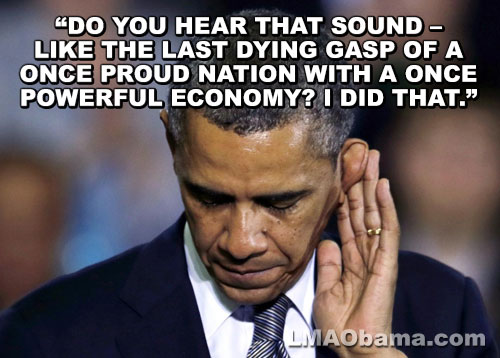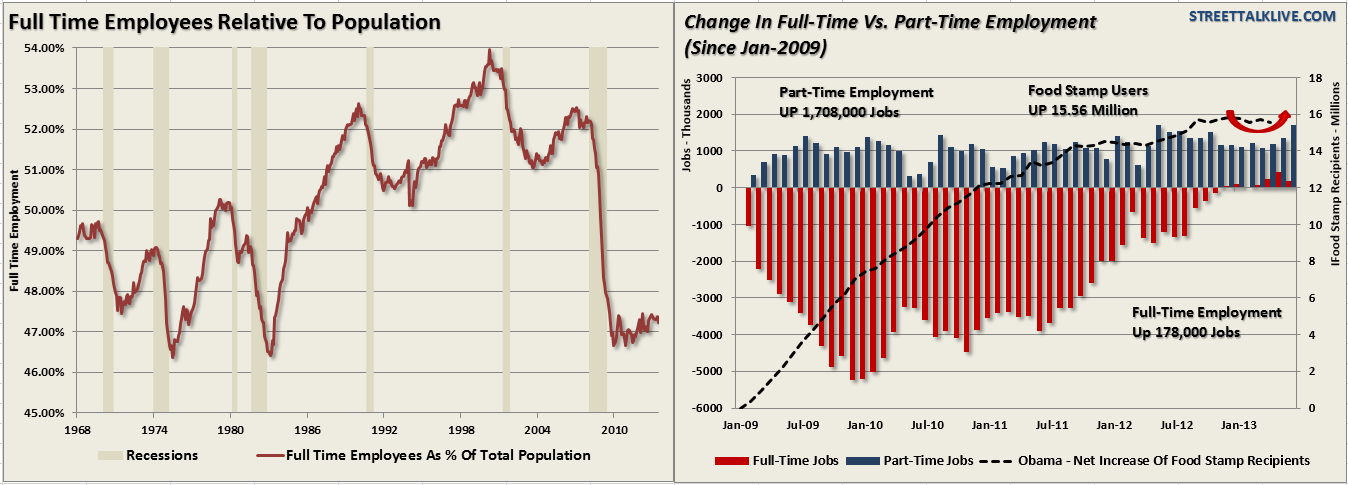
Obama’s Economic Report Card
Tyler Durden Zerohedge
As the President prepares to address Congress (and the nation) with his next new new ‘better bargain’ deal to secure the economic future for the US, we thought it appropriate to dust off the economic scorecard for how things are going under his old new deal. Obviously, the President of the United States is not really solely responsible for where we are economically. The condemnation, or praise, must be applied equally to all branches of government responsible for the fiscal and monetary policy decisions made. The problems that exist today were not due to just the last few years of excess but rather come as a result of more than 30 years of fiscal irresponsibility that spans both Republican and Democratic Administrations alike. However, since President Obama has taken the position of responsibility for “clearing away the rubble and getting us back to where we were”, we can review the economic data to see whether, or not, this is indeed the case.
- Full-Time Employment (Grade D)
- Incomes (Grade C-)
- Home Ownership (Grade F)
- Household Net Worth (Grade C)
Via Lance Roberts of Street Talk Live blog,

In a recent Politico playbook posting the following paragraph caught my attention:
“POTUS last night, at an Organizing for Action dinner at the Mandarin Oriental: “Galesburg is where I gave my first big speech [June 2005] after I had been elected to the United States Senate. It was the commencement at Knox College, and it was a speech about the economy. … And all these trends that had been taking place were visible at the time — rising inequality, struggles in the middle class — but they were papered over to some extent by the bubble. And by the time I took office, the bottom had fallen out. … [O]ver the last five years,… because of the grit and resilience and determination of the American people, we’ve been able to clear away the rubble and get back to where we were.“
First, let me just point out that the President of the United States is not really solely responsible for where we are economically. The condemnation, or praise, must be applied equally to all branches of government responsible for the fiscal and monetary policy decisions made. The problems that exist today were not due to just the last few years of excess but rather come as a result of more than 30 years of fiscal irresponsibility that spans both Republican and Democratic Administrations alike.
However, since President Obama has taken the position of responsibility for “clearing away the rubble and getting us back to where we were”, we can review the economic data to see whether, or not, this is indeed the case. Have continued bailouts, financial stimulus and the myriad of other financial supports gotten the U.S. economy back to where it was in 2009? In order to answer this question for yourself, and grade Obama’s success relevant to his statement, we will look at major aspects of the economy from full-time employment, incomes, home ownership and household net worth.
Full-Time Employment (Grade D)
Full-time, benefit providing, employment is the only type of employment that matters for the average American. Full-time employment allows for an increasing standard of living, household formation, and higher personal savings rates. The 2-panel chart below shows the total increase in full-time employment relative to the working-age population and the net increases in full-time and temporary employment since 2009.
Since 2009 there has actually been very little increase in full-time employment. What is often overlooked in monthly employment numbers is that the working age population has been growing faster than total employment. This has led to a coincident surge in welfare dependency, as represented by “food stamp” usage, as those they are forced to work part-time, or are just unable to find work, seek alternative measures to make ends meet.
continue article at ZeroHedge:
http://www.zerohedge.com/news/2013-07-24/obamas-economic-report-card
http://beforeitsnews.com/economy/2013/07/obamas-economic-report-card-2540086.html

